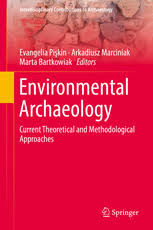Environmental archeology: definitions, practices and directions found?
DOI:
https://doi.org/10.31048/1852.4826.v13.n2.27808Keywords:
Environmental Archaeology, Book ReviewAbstract
Book Review. Environmental Archaeology. Current Theoretical and Methodological Approaches (2018) Evangelia Pişkin, Arkadiusz Marciniak y Marta Bartkowiak (editores). Interdisciplinary Contributions to Archaeology Series. Springer. ISNB 978-3-319-75082-8
Downloads
References
Albarella, U. (2001). Exploring the real nature of environmental archaeology. In U. Albarella (Ed.), Environmental archaeology: Meaning and purpose (pp. 3–13). Dordrecht: Kluwer Academic Publishers.
Boyd, W. E. (1990). Towards a conceptual framework for environmental archaeology: environmental archaeology as a key to past geographies, Circaea 7(2),63-68.
Dincauze, D. F. (2000). Environmental archaeology: Principles and practice. Cambridge: Cambridge University Press.
Emmett, R. S., and D. E. Nye. (2017). The Environmental Humanities: A Critical Introduction. Cambridge: MIT Press.
Thomas, K. (2001). Environmental archaeology is dead: Long live bioarchaeology, geoarchaeology and human palaeoecology. A comment on “environmental archaeology is not human palaeoecology”. In U. Albarella (Ed.), Environmental archaeology: Meaning and purpose (pp. 55–58). Dordrecht: Kluwer Academic Publishers.

Downloads
Published
Issue
Section
License
Copyright (c) 2020 Celeste Samec

This work is licensed under a Creative Commons Attribution-NonCommercial-ShareAlike 4.0 International License.
Those authors who have publications with this Journalaccept the following terms:
a. Authors will retain their copyrights and guarantee the journal the right of first publication of their work, which will be simultaneously subject to the Creative Commons Attribution License (Licencia de reconocimiento de Creative Commons) that allows third parties to share the work as long as its author and his first publication in this journal.
b. Authors may adopt other non-exclusive licensing agreements for the distribution of the version of the published work (eg, deposit it in an institutional electronic file or publish it in a monographic volume) provided that the initial publication in this journal is indicated.
c. Authors are allowed and recommended to disseminate their work on the Internet (eg in institutional telematic archives or on their website) before and during the submission process, which can lead to interesting exchanges and increase citations of the published work. (See The Effect of Open Access - El efecto del acceso abierto)











